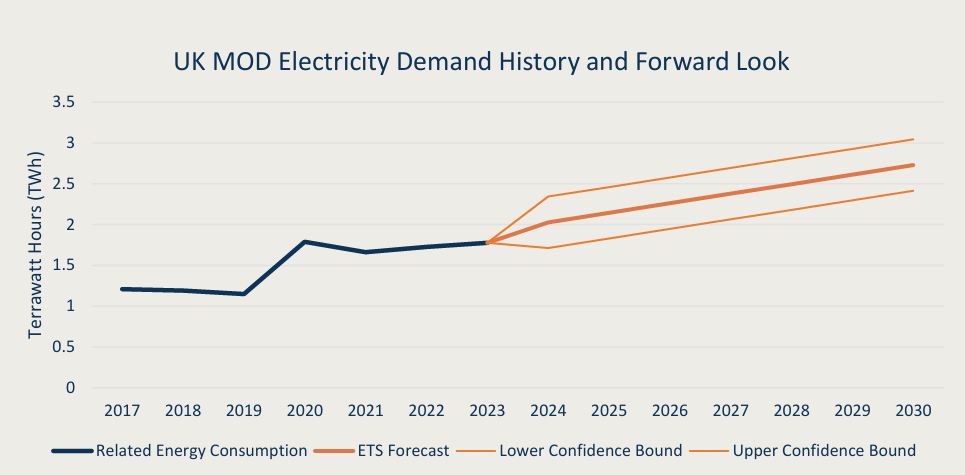Article published by the NATO Energy Security Centre of Excellence, July 2025.
NATO Allies are undergoing a significant transformation in electricity usage, driven by the rapid electrification of military platforms, digital systems, and infrastructure. This shift, while necessary for modernization and operational superiority, introduces complex dependencies on national energy systems and markets.
Rising military electricity demand:
The electrification of vehicles, sensors, communications, and potentially even combat systems like directed energy weapons is sharply increasing military electricity demand. UK Ministry of Defence (MOD) data reveals a 46% rise in electricity consumption between 2017 and 2023, with projections reaching 2.7 TWh annually by 2030. As electrification accelerates, military institutions could become some of the largest national electricity consumers. This growing demand, if mirrored across NATO, requires urgent planning to avoid overburdening national grids.

Dependence on civilian grids:
While some bases generate electricity on-site using diesel, renewables, or potentially nuclear, fixed military infrastructure remains heavily reliant on national electricity distribution systems. This creates a structural dependency on civilian grid resilience and the ability of Distribution System Operators (DSOs) to manage inelastic military loads without disrupting broader supply-demand balance.
Military electricity demand is largely unresponsive to price changes, which can exert upward pressure on wholesale electricity prices. Therefore, reducing grid dependence, especially through on-base renewable generation can benefit both defence resilience and civil consumers.
Strategic risks and supply security:
The geopolitical context adds further urgency. Russia’s invasion of Ukraine has heightened the focus on energy security and the need to reduce dependence on energy imports. If military electricity demand outpaces national generation capacity, NATO countries may face increased reliance on imports, undermining energy sovereignty and stability. This is especially critical for nations with limited indigenous generation capacity or vulnerable grid infrastructure.
Host Nation Support (HNS) is another crucial dimension. Allied deployments, particularly on NATO’s eastern flank place additional energy and logistical burdens on host countries. Planning for HNS must include detailed energy provisions to ensure operational readiness without straining local infrastructure.
Grid infrastructure and resilience:
As military demand becomes a more significant share of national electricity systems, the resilience of civilian energy infrastructure becomes inseparable from defence capability. DSOs must plan for large, inelastic loads and invest in upgrades to cables, substations, and transformers. Coordinated, scenario-based planning, especially for crisis or surge conditions is essential for pre-empting infrastructure stress.
Strategic solutions and recommendations:
A robust civil-military approach to energy planning is essential. Key strategies include:
- Integrating military electricity demand into national energy planning frameworks.
- Investing in indigenous, on-site generation at military installations (e.g., microgrids, mobile renewables, battery storage).
- Incorporating energy availability into HNS planning to ensure seamless alliance operations.
- Strengthening system resilience against hybrid and cyber threats to infrastructure.
- Enhancing coordination among Ministries of Defence, Energy, DSOs, and TSOs for long-term scenario planning.
Ultimately, future operational effectiveness depends on NATO’s ability to align defence strategy with sustainable, resilient, and forward-looking energy policy.
This text is based on extracts from an article written by Ben Cook, July 2025. To read the complete paper, follow the link here.
See below for our coverage on similar topics:
- Towards Green Industrial Partnerships: Reducing Europe’s Energy and Resource Strain
- NATO and climate change: Towards a joint understanding and response
- Fifty Years of Transition: How the U.S. Military Transformed its Estates Energy Strategy



